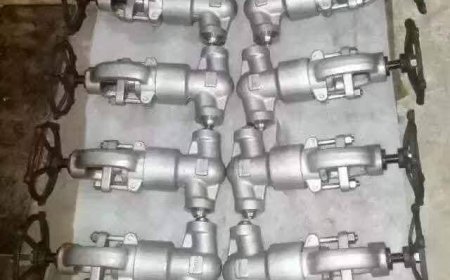Optimizing Multi-Layer PET for Both Barrier Strength and Recycling Efficiency
Discover how multi-layer PET design is evolving to balance superior barrier protection and recyclability, helping industrial polymers companies meet sustainability and performance goals.
Making Multi-Layer PET Better for Barriers and Recycling
These days, there's a big push for packaging that works well and is good for the planet, which means multi-layer PET is getting a lot of attention. It's super important for keeping things like fizzy drinks, liquid medicines, and food fresh for longer by blocking oxygen and moisture. But, all those extra layers and special ingredients make recycling a pain.
So, companies are trying to find that sweet spot where packaging does its job and can still be recycled easily. It's not just about making stuff that works; it's also about being eco-friendly and following the rules. Because of this, we're seeing some cool new ideas in materials and smarter ways of making things.
Let's check out how multi-layer PET is changing to handle both needs and what Industrial Polymers Companies can do to help switch to packaging that's both useful and sustainable.
Why Barriers Matter in PET Packaging
PET is popular because it's clear, tough, and easy to shape. Still, it often needs a little help to really protect what's inside. Things that are sensitive to oxygen, like juice, milk, and beer, need to be shielded from the air. And medicines might need protection from moisture or sunlight. To make PET better at this, they stick on layers of stuff like EVOH, PA, or coatings made of silicon oxide.
These layers seriously cut down on how much gas and moisture can get through. Still, they can mess things up when it's time to recycle. Most recycling plants are set up for just one type of PET, so they can't easily sort out or reuse all the different materials in these multi-layer bottles. That means these bottles often end up getting turned into lower-quality stuff or just thrown away, which isn't great for the environment.
The Recycling Problem with Multi-Layer PET
Now, everyone expects packaging to be recyclable. Laws, company promises, and people's expectations all point that way. The issue is that a lot of the materials used to make PET better aren't friends with the recycling process. They can even mess things up by contaminating the recycled material.
When you shred and melt down a multi-layer PET bottle, the non-PET layers act differently. They might not melt properly or mix well, leading to globs or dark spots in the recycled plastic. That makes it too poor for important uses like food containers. Plus, not being able to separate these layers well means a lot of wasted material.
That's why recycling groups are taking a closer look at multi-layer PET. Lots of people are suggesting we design things smarter from the start, making sure materials mix well and are easy to separate. If you're an Industrial Polymers Company, that means thinking carefully about how you make multi-layer PET so it can fit back into the recycling loop.
Cool New Materials for Recycling-Friendly Barriers
One good way to tackle the recycling issue is to come up with barrier materials that can be recycled along with PET. That includes new types of EVOH that mix more easily and innovative PET-based barriers that protect just as well without adding weird stuff.
Compatibilizers are also super helpful. Think of them as bridges that link PET with other polymers, helping them blend better during recycling. The latest versions don't just improve how things stick together; they also make recycling easier without ruining the quality of the plastic.
Another idea that's catching on is making bottles that can be easily pulled apart. These bottles have a weak layer that lets you peel off the barrier layers during recycling. You can do this with machines or chemicals, keeping the PET in good shape while getting rid of the barrier layer safely.
Designing for Recycling: The Big Picture
Making multi-layer PET recyclable isn't just about picking the right materials. It means looking at the whole design from start to finish. That includes the shape of the bottle, how thick each layer is, what kind of glue you use, and what colors you pickall of these things affect how easy it is to recycle the final product.
Smart companies are now using Design for Recycling (DfR) guides that use the best ideas from around the world and info from recyclers. These guides suggest using as little non-PET material as possible, sticking to clear or light-colored PET, and making sure labels and glues come off easily. The goal is to create a bottle that not only works well when you use it but can also be reliably turned back into quality recycled plastic.
An Industrial Polymers Company that follows DfR can get ahead of the game. It ensures they'll meet future rules and encourages new ideas that can save money, create new products, and build trust with customers.
What's Happening in the Market and with Regulations
Rules about plastic packaging are getting stricter all over the world, especially when it comes to recycling. The European Union and Extended Producer Responsibility (EPR) laws in the U.S. are making manufacturers responsible for what happens to their packaging at the end of its life. These rules are pushing companies to move away from making, using, and tossing to a more circular approach.
At the same time, major brands like Coca-Cola, Nestl, and Unilever are setting big goals for using recycled materials and making their packaging recyclable. To hit these targets, they need to work closely with their suppliers, which puts both pressure and opportunity on every Industrial Polymers Company in the packaging business.
The Future: Circular Barrier Packaging
The real solution is to create materials and designs that are both high-performing and eco-friendly. New tech like using enzymes or solvents to break down complex multi-layer structures is promising, but it's still early days.
For now, some companies are trying out mixes like combining traditional barriers with plant-based PET or adding special markers that help sort the plastic. Digital watermarks or fluorescent tracers can make sorting easier in recycling plants, so multi-layer PET can be separated and reused better.
Also, teamwork is key. One company can't solve the recycling problem alone. Resin makers, packaging designers, recyclers, and regulators need to team up to set standards, invest in facilities, and share info to speed up innovation.
Making PET Packaging Work for Everyone
Finding the balance between protection and recyclability is tough, but it's not impossible. With new materials, smart designs, and teamwork, we can move toward a circular economy without losing performance.
The way forward is clear for Industrial Polymers Companies: use recyclable materials, design with the big picture in mind, and help with the global effort to make packaging sustainable. As rules change and people become more aware, the companies that lead in this area will not only stay compliant but also shape the future of smart, responsible manufacturing.










































